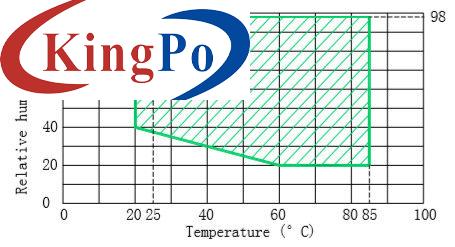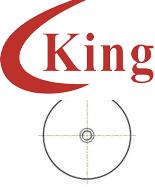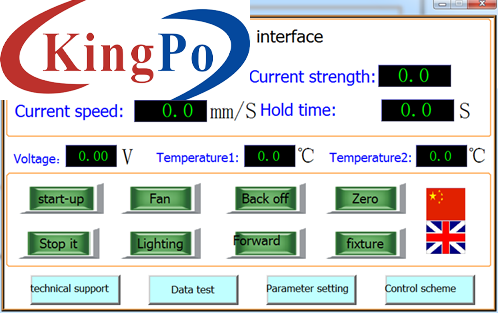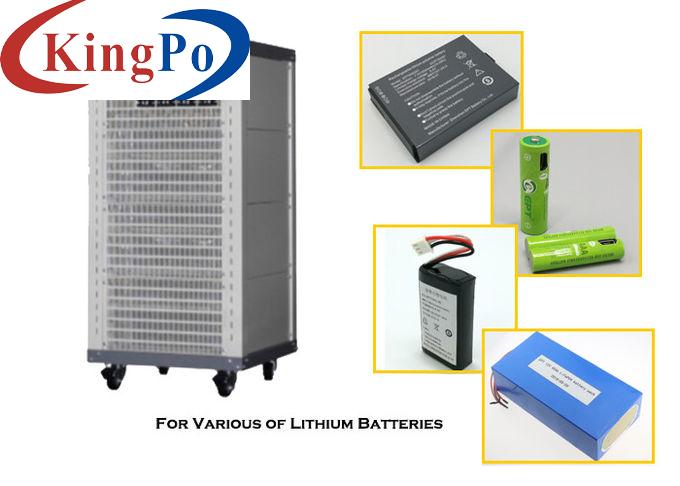Products

IEC 62133 Battery Testing Equipment Thermal Cycling Low / High Temperature Exposure Test
Products Description
IEC 62133 Cell Battery Thermal Cycling Low and High Temperature Exposure Test Chamber
Overview:
This low and high temperature cycling test equipment is mainly used for electric and electronic products, components and other materials' high low temperature test, temperature alternating, damp heat test, environment simulate reliability test, etc.
This test equipment adopts programmable high accuracy microcomputer controller, 7-inch TFT color LCD touch screen, and Intelligent software, which can achieve easy and humanized operation.
Standards Compliant:
It conforms to IEC62133:2017 clause 7.2.4, IEC62133:2012 clause 7.2.4, IEC60086-4 clause 6.4.2 etc.
Technical Parameters:
W700mm*H1750mm*D1570mm (can be customized)
Kindly remark: exact overall dimension pls refer to the final design drawing!
Air cooling type under environment temp.+5℃~+35℃, relative humidity≤85%.
No load (without specimen in the testing zone)
No
Temperature
Humidity Control
Diagraph
Internal chamber with 1.2mm thick SUS#304 high &low temperature
resistance stainless steel. Bottom with 2mm thick #304 stainless
steel, with high strength square tube connection reinforcement , loading capacity with ≥250KG/㎡
How is the differences of the thermal cycling test procedures between IEC 60086-4 and IEC 62133-1?
Test Procedure as per IEC 60086-4:2014 clause 6.4.2:
Test cells and batteries shall be stored for at least 6h at a test temperature of 72 ℃, followed by storage for at least 6 h at a test temperature of -40 ℃. The maximum time for transfer to each temperature shall be 30 min. Each test cell and battery shall undergo this procedure 10 times. This is then followed by storage for at least 24 h at ambient temperature.
For large cells and batteries the duration of exposure to the test temperatures shall be at least 12 h instead of 6 h.
Test Procedure as per IEC 62133-1:2017 clause 7.2.4:
Fully charged cells or batteries are subjected to temperature cycling (-20 ℃, +75 ℃), in forced draught chambers, according to the following procedure.
Step 1: Place the cells or batteries in an ambient temperature of +75 ℃ ±2 ℃ for 4 h.
Step 2: Change the ambient temperature to 20 ℃ ±5 ℃ within 30 min and maintain at this temperature for a minimum of 2 h.
Step 3: Change the ambient temperature to -20 ℃ ±2 ℃ within 30 min and maintain at this temperature for 4 h.
Step 4: Change the ambient temperature to 20 ℃ ±5 ℃ within 30 min and maintain at this temperature for a minimum of 2 h.
Step 5: Repeat steps 1 to 4 for a further four cycles. Transition from Step 4 to Step 1 within 30 min.
Step 6: After the fifth cycle, store the cells or batteries and conduct a visual check after a rest period of at least 24 h.
Volume & Dimension
Effective Volume
150L (can be customized)
Inner Dimension
W500 mm*H600 mm*D500 mm (can be customized)
Overall Dimension
Performance
Condition
Temp. Range
-40℃~+150℃
Temp. Fluctuation
±0.5℃
Temp. Deviation
≤±2.0℃
Temp. Uniformity
≤2.0℃
Temp. Heating Time
From -40℃ to 80℃, full range non-linear average about 5℃/mins, no load
Temp. Cooling Time
From 80℃to -40℃ , full range non-linear average about 5℃/mins, no load
Temp. Overshoot
≤±2℃
Max. Loading
No
Humidity Range
20%RH~98%RH
Humidity Fluctuation
≤±2.5%RH
Humidity Deviation
>75% RH: ≤+2, -3%RH, <75%RH:≤±5%RH
Constant Max. Heating Load

Noise
≤70dB(A Level)
Structure & Material
External Chamber
Adopt double electrostatic resin high temperature paint galvanized sheet.
Internal Chamber
Insulation Material
Adopt flame retardant high strength PU Polyurethane foam insulation material with thickness of 100mm, heat preservation coefficient less than 0.0212kcal/Mohr.
Chamber Door
Single open door, Door size: W500XH600mm.
Observation Window
With vacuum glass observation window (W300 xH400mm) on the door; and door frame with electric heat resistant, anti-frosting, anti-condensing devices, ensures clear observation of the specimen under testing
Testing Hole
One ¢50mm testing hole on left of the chamber, with silicon seal and stainless steel cover.
Sealing
Adopt original imported silicon rubber strip, with high sealing performance
Sample Holder
SUS#304 stainless steel sample holder, 2 layers, loading capacity: >50KG/layer.
Pressure Balance Port
Installed mechanical pressure close type balance device to avoid pressure difference influence the test chamber strength when do high temp. high humidity test.
Lighting Inside Chamber
With one Philip brand energy saving light (9W) inside the observation window





